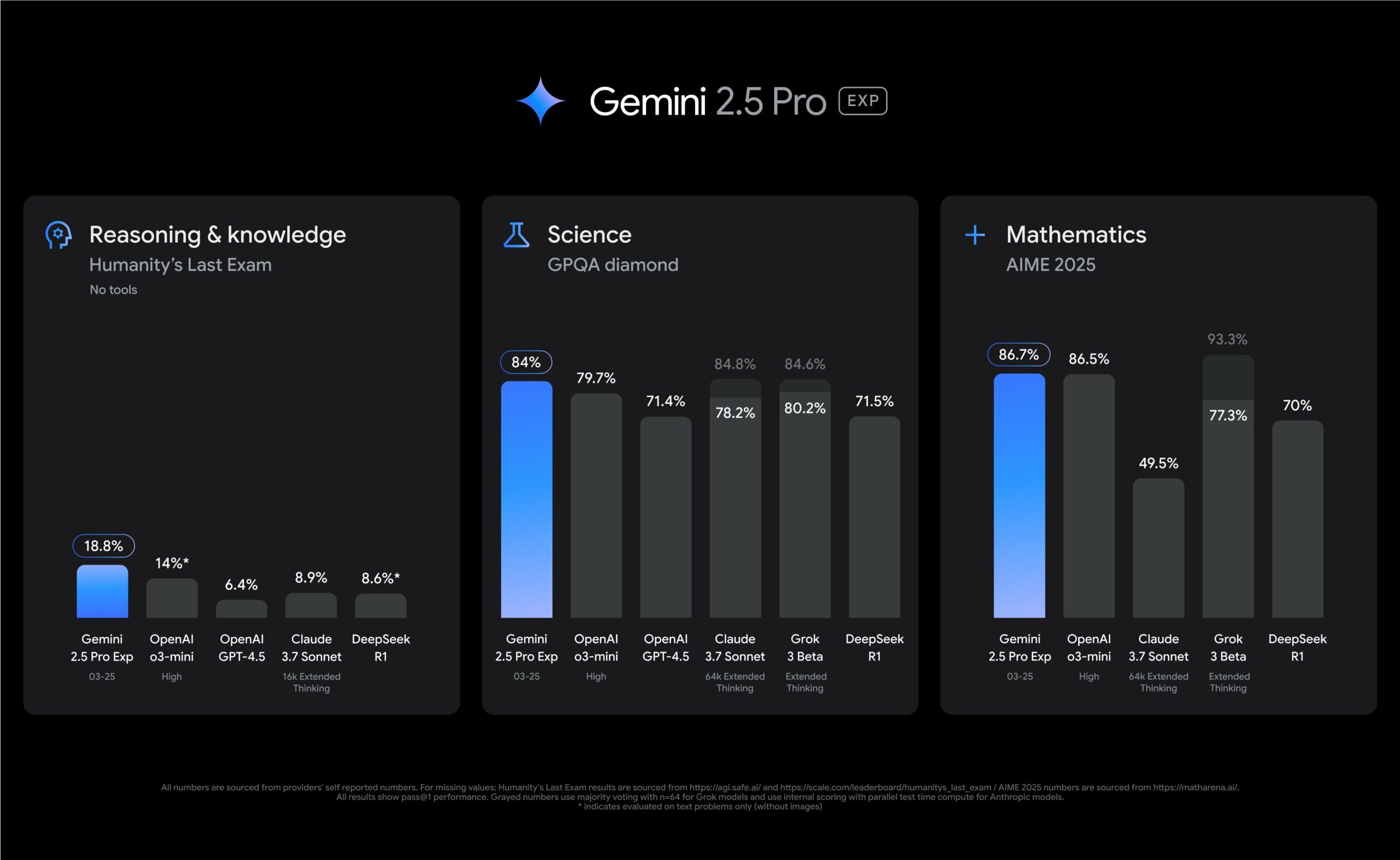
第一章:AWS Lambda 簡介
本文大綱
1. 什麼是 Serverless 架構?
Serverless(無伺服器)架構是雲端運算的一種模型,它讓開發者能夠構建和運行應用程序,而無需管理底層的伺服器基礎設施。在 Serverless 架構中:
核心特點:
- 無需伺服器管理:開發者不需要關心伺服器的設置、維護和擴展
- 自動擴展:根據需求自動調整運算資源
- 按使用付費:只在代碼執行時付費,閒置不收費
- 事件驅動:功能會根據特定事件或請求觸發
Serverless vs 傳統架構:
傳統架構:
- 需要持續運行伺服器
- 需要管理伺服器容量
- 閒置資源浪費
- 手動擴展
Serverless 架構:
- 按需執行
- 自動擴展
- 按使用量計費
- 專注於業務邏輯
2. Lambda 的核心概念和優勢
AWS Lambda 是 AWS 提供的 Serverless 計算服務,它允許你運行代碼而無需管理伺服器。
核心概念:
2.1 函數(Function)
- Lambda 的基本工作單位
- 包含您的應用程式代碼和相關依賴
- 可以用多種程式語言編寫(Python, Node.js, Java, Go 等)
2.2 事件源(Event Source)
- 觸發 Lambda 函數的 AWS 服務或自定義應用程序
- 常見事件源:
- API Gateway(HTTP 請求)
- S3(檔案上傳)
- DynamoDB(數據變更)
- CloudWatch Events(定時任務)
2.3 執行環境(Runtime Environment)
- 安全隔離的執行容器
- 自動管理計算資源
- 提供基本的監控和日誌功能
Lambda 的優勢:
- 高度可擴展性
- 自動擴展至每秒數千個請求
- 無需預先設定或管理擴展邏輯
- 成本效益
- 僅按實際執行時間和資源使用量收費
- 無需支付閒置資源費用
- 具免費額度
- 整合便利性
- 與其他 AWS 服務深度整合
- 豐富的觸發器選項
- 支援自定義整合
- 運維簡化
- 無需管理伺服器
- AWS 自動處理高可用性
- 內建監控和日誌功能
- 開發效率
- 專注於代碼邏輯
- 快速部署和更新
- 支援多種程式語言
3. Lambda 的定價模型和使用限制
定價模型:
Lambda 採用高度精細的計費模型,根據以下三個維度計費:
- 請求次數
- 每月前 1,000,000 次請求免費
- 之後每 1,000,000 次請求收取 $0.20
- 執行時間
- 以 1ms 為計費單位
- 價格根據配置的記憶體大小變動
- 包含慷慨的免費額度(每月 400,000 GB-秒)
- 配置記憶體
- 可配置範圍:128MB – 10GB
- 記憶體越大,CPU 和網絡資源相應增加
使用限制:
技術限制:
- 執行時間限制
- 最長執行時間為 15 分鐘
- 建議將長時間運行的任務拆分
- 記憶體限制
- 最小 128MB
- 最大 10GB
- 以 64MB 為增量進行配置
- 部署包大小
- 壓縮後最大 50MB
- 解壓後最大 250MB
- 建議使用 Layer 管理大型依賴
- 並發限制
- 默認區域並發限制為 1,000
- 可申請提升限制
- 支援設置預留並發
網絡限制:
- VPC 連接
- 支援配置 VPC 訪問
- 可能影響冷啟動時間
- 需要配置適當的安全組和子網
- API 調用
- 異步調用有效負載限制為 256KB
- 同步調用有效負載限制為 6MB
最佳實踐建議:
- 控制執行時間
- 保持函數執行時間短
- 實現適當的超時處理
- 考慮使用異步模式
- 優化記憶體使用
- 根據實際需求配置記憶體
- 監控記憶體使用情況
- 定期優化配置
- 管理並發
- 設置適當的並發限制
- 使用預留並發保護關鍵功能
- 實施重試策略
總結
AWS Lambda 作為一個強大的 Serverless 計算服務,為開發者提供了一個高效、經濟且易於管理的解決方案。通過理解其核心概念、優勢和限制,您可以更好地評估是否適合您的使用場景,並在使用時做出更明智的設計決策。
在下一章中,我們將深入探討如何設置您的第一個 Lambda 函數,包括帳號設置、權限配置等基礎內容。
第二章:Lambda 基礎設置
1. AWS 帳號設置和 IAM 權限配置
1.1 AWS 帳號設置
在開始使用 AWS Lambda 之前,您需要完成以下基礎設置:
AWS 帳號創建步驟:
- 訪問 AWS 官網並點擊「建立 AWS 帳戶」
- 填寫基本信息:
- 電子郵件地址
- 密碼
- AWS 帳戶名稱
- 填寫聯繫信息:
- 聯繫地址
- 電話號碼
- 付款信息
- 完成身份驗證
- 選擇支援方案(建議初期使用免費的基本支援)
安全最佳實踐:
- 啟用多因素認證(MFA)
- 定期更新根帳戶密碼
- 避免使用根帳戶進行日常操作
- 設置賬單警報
1.2 IAM 權限設置
IAM(Identity and Access Management)是 AWS 的權限管理系統,用於控制對 AWS 服務的訪問。
IAM 用戶創建:
- 進入 IAM 控制台
- 選擇「用戶」→「添加用戶」
- 設置用戶名和訪問類型:
- 建議同時選擇「程序訪問」和「AWS Management Console 訪問」
- 設置權限:
- 可以添加到現有組
- 複製現有用戶的權限
- 直接附加策略
常用 Lambda 相關權限:
{
"Version": "2012-10-17",
"Statement": [
{
"Effect": "Allow",
"Action": [
"lambda:CreateFunction",
"lambda:UpdateFunctionCode",
"lambda:UpdateFunctionConfiguration",
"lambda:DeleteFunction",
"lambda:InvokeFunction",
"lambda:ListFunctions",
"lambda:GetFunction",
"lambda:GetFunctionConfiguration"
],
"Resource": "*"
}
]
}2. Lambda 執行角色(Role)的創建和管理
Lambda 執行角色定義了 Lambda 函數在運行時可以訪問的 AWS 服務和資源。
2.1 創建執行角色
基本步驟:
- 進入 IAM 控制台
- 選擇「角色」→「創建角色」
- 選擇服務:AWS Lambda
- 附加權限策略:
- 基本執行角色:AWSLambdaBasicExecutionRole
- 其他根據需求選擇
常用權限策略:
- AWSLambdaBasicExecutionRole:基本的 CloudWatch Logs 權限
- AWSLambdaVPCAccessExecutionRole:訪問 VPC 資源的權限
- AWSLambdaDynamoDBExecutionRole:訪問 DynamoDB 的權限
- AWSLambdaS3ExecutionRole:訪問 S3 的權限
2.2 權限管理最佳實踐
- 最小權限原則
- 只給予必要的權限
- 定期審查和更新權限
- 移除未使用的權限
- 使用條件限制
- 限制特定 IP 範圍
- 限制時間範圍
- 限制資源範圍
- 權限分組管理
- 根據功能分組
- 使用標籤進行管理
- 統一權限策略
3. Lambda 函數的基本配置參數
3.1 基本設置
函數配置選項:
- 函數名稱
- 需要在區域內唯一
- 長度限制:64 字符
- 允許的字符:a-z, A-Z, 0-9, -, _
- 運行時環境
- 選擇程式語言版本
- 自定義運行時選項
- 記憶體配置
- 範圍:128MB – 10GB
- 影響 CPU 分配
- 影響計費
- 超時設置
- 最長 15 分鐘
- 建議設置合理的超時時間
3.2 進階配置
網絡配置:
- VPC 設置
- 選擇 VPC
- 配置子網
- 設置安全組
- 環境變量
- 鍵值對形式
- 支持加密
- 運行時可訪問
- 並發設置
- 預留並發
- 佈建並發
- 並發限制
- 監控和追蹤
- CloudWatch 配置
- X-Ray 追蹤
- 日誌級別設置
4. 支援的程式語言和運行環境
4.1 官方支援的運行時
AWS Lambda 支援多種程式語言的運行環境:
- Node.js
- 版本:18.x, 16.x, 14.x
- 適合事件驅動應用
- 非阻塞 I/O 操作
- Python
- 版本:3.9, 3.8, 3.7
- 豐富的套件生態系統
- 數據處理能力強
- Java
- 版本:11, 8
- 企業級應用支援
- 強類型安全
- Go
- 版本:1.x
- 高性能
- 低記憶體佔用
- Ruby
- 版本:2.7
- 開發效率高
- 適合 Web 應用
- .NET Core
- 版本:6.0, 3.1
- Windows 生態系統整合
- 企業級功能
4.2 自定義運行時
如果官方支援的運行時不能滿足需求,可以使用自定義運行時:
- 創建方式
- 使用 Custom Runtime API
- 基於 Amazon Linux 2
- 實現運行時接口
- 使用場景
- 特定版本的程式語言
- 自定義的運行環境
- 特殊的依賴要求
- 注意事項
- 需要自行維護
- 可能影響冷啟動時間
- 需要確保安全性
總結
完成本章節的設置後,您將擁有一個可以開始開發 Lambda 函數的基礎環境。正確的權限配置和基本設置是確保 Lambda 函數安全和高效運行的關鍵。在下一章中,我們將開始開發您的第一個 Lambda 函數,介紹函數的基本結構和開發方法。
第三章:開發你的第一個 Lambda 函數
1. 函數處理器(Handler)的結構
Lambda 函數的處理器是程式的入口點,它是 Lambda 運行時調用的方法。不同程式語言有不同的處理器結構。
1.1 各語言的處理器結構
Python 處理器
def handler(event, context):
# 處理邏輯
response = {
'statusCode': 200,
'body': 'Hello from Lambda!'
}
return responseNode.js 處理器
exports.handler = async (event, context) => {
// 處理邏輯
const response = {
statusCode: 200,
body: 'Hello from Lambda!'
};
return response;
};Java 處理器
public class Handler implements RequestHandler<Map<String,String>, String> {
@Override
public String handleRequest(Map<String,String> event, Context context) {
// 處理邏輯
return "Hello from Lambda!";
}
}1.2 處理器命名規則
- 格式:
fileName.handlerName - 例如:
index.handler,app.lambdaHandler - 需要在 Lambda 配置中正確指定
1.3 處理器最佳實踐
- 錯誤處理
def handler(event, context):
try:
# 主要處理邏輯
result = process_event(event)
return {
'statusCode': 200,
'body': json.dumps(result)
}
except Exception as e:
return {
'statusCode': 500,
'body': json.dumps({
'error': str(e)
})
}- 日誌記錄
import logging
logger = logging.getLogger()
logger.setLevel(logging.INFO)
def handler(event, context):
logger.info('Event: %s', event)
# 處理邏輯
logger.info('Processing completed')- 資源清理
def handler(event, context):
# 獲取資源
resources = acquire_resources()
try:
# 處理邏輯
return process_with_resources(resources)
finally:
# 清理資源
cleanup_resources(resources)2. 事件(Event)和上下文(Context)物件
2.1 事件物件
事件物件包含了觸發 Lambda 函數的數據。
常見事件格式:
- API Gateway 事件
{
"resource": "/path",
"path": "/path",
"httpMethod": "GET",
"headers": {
"Accept": "*/*",
"Authorization": "Bearer token"
},
"queryStringParameters": {
"param1": "value1"
},
"body": "request body"
}- S3 事件
{
"Records": [{
"eventVersion": "2.1",
"eventSource": "aws:s3",
"awsRegion": "us-east-1",
"eventTime": "2023-01-01T12:00:00.000Z",
"eventName": "ObjectCreated:Put",
"s3": {
"bucket": {
"name": "bucket-name"
},
"object": {
"key": "file-name",
"size": 1024
}
}
}]
}2.2 上下文物件
上下文物件提供了運行時信息和方法。
主要屬性和方法:
- Python 上下文物件
def handler(event, context):
# 獲取剩餘執行時間
remaining_time = context.get_remaining_time_in_millis()
# 獲取函數信息
function_name = context.function_name
function_version = context.function_version
# 獲取請求ID
request_id = context.aws_request_id- Node.js 上下文物件
exports.handler = async (event, context) => {
// 獲取剩餘執行時間
const remainingTime = context.getRemainingTimeInMillis();
// 獲取函數信息
const functionName = context.functionName;
const functionVersion = context.functionVersion;
// 獲取請求ID
const requestId = context.awsRequestId;
};3. 同步和非同步調用方式
3.1 同步調用
同步調用等待函數執行完成並返回結果。
// AWS SDK 示例
const AWS = require('aws-sdk');
const lambda = new AWS.Lambda();
async function invokeSynchronously() {
const params = {
FunctionName: 'MyFunction',
InvocationType: 'RequestResponse',
Payload: JSON.stringify({key: 'value'})
};
try {
const response = await lambda.invoke(params).promise();
return JSON.parse(response.Payload);
} catch (error) {
console.error('Error:', error);
throw error;
}
}3.2 非同步調用
非同步調用不等待結果,適合長時間運行的任務。
// AWS SDK 示例
async function invokeAsynchronously() {
const params = {
FunctionName: 'MyFunction',
InvocationType: 'Event',
Payload: JSON.stringify({key: 'value'})
};
try {
await lambda.invoke(params).promise();
return 'Function invoked asynchronously';
} catch (error) {
console.error('Error:', error);
throw error;
}
}4. 本地測試和部署方法
4.1 本地測試
使用 AWS SAM CLI
- 安裝 SAM CLI
# macOS
brew tap aws/tap
brew install aws-sam-cli
# Windows
msiexec /i https://github.com/aws/aws-sam-cli/releases/latest/download/AWS_SAM_CLI_64_PY3.msi- 創建測試事件
// events/event.json
{
"key1": "value1",
"key2": "value2"
}- 運行本地測試
sam local invoke -e events/event.json使用單元測試
# test_handler.py
import unittest
from your_lambda import handler
class TestHandler(unittest.TestCase):
def test_handler(self):
event = {'key': 'value'}
context = type('obj', (object,), {
'function_name': 'test',
'function_version': '$LATEST',
'aws_request_id': '1234'
})
response = handler(event, context)
self.assertEqual(response['statusCode'], 200)4.2 部署方法
使用 AWS CLI
- 打包函數
zip -r function.zip .- 創建函數
aws lambda create-function \
--function-name MyFunction \
--runtime python3.9 \
--role arn:aws:iam::123456789012:role/lambda-role \
--handler index.handler \
--zip-file fileb://function.zip- 更新函數代碼
aws lambda update-function-code \
--function-name MyFunction \
--zip-file fileb://function.zip使用 AWS SAM
- 創建 SAM 模板
# template.yaml
AWSTemplateFormatVersion: '2010-09-09'
Transform: AWS::Serverless-2016-10-31
Resources:
MyFunction:
Type: AWS::Serverless::Function
Properties:
CodeUri: ./
Handler: index.handler
Runtime: python3.9
Events:
ApiEvent:
Type: Api
Properties:
Path: /hello
Method: get- 構建和部署
sam build
sam deploy --guided總結
本章介紹了開發 Lambda 函數的基本要素,包括處理器結構、事件和上下文物件的使用,以及不同的調用方式。我們也學習了如何在本地測試函數並部署到 AWS。
在下一章中,我們將深入探討 Lambda 觸發器的整合,學習如何將 Lambda 函數與其他 AWS 服務結合使用。
第四章:Lambda 觸發器整合
1. API Gateway 整合實現 RESTful API
1.1 API Gateway 基礎配置
創建 REST API
# serverless.yml 配置示例
functions:
myApi:
handler: handler.endpoint
events:
- http:
path: /users
method: get
cors: trueLambda 處理器代碼
def endpoint(event, context):
try:
# 處理請求參數
http_method = event['httpMethod']
path_parameters = event.get('pathParameters', {})
query_parameters = event.get('queryStringParameters', {})
# 返回響應
return {
'statusCode': 200,
'headers': {
'Content-Type': 'application/json',
'Access-Control-Allow-Origin': '*'
},
'body': json.dumps({
'message': 'Success',
'data': {
'method': http_method,
'path_params': path_parameters,
'query_params': query_parameters
}
})
}
except Exception as e:
return {
'statusCode': 500,
'body': json.dumps({'error': str(e)})
}1.2 API 授權和安全性
配置 API Key
provider:
apiKeys:
- name: my-api-key
- name: client-api-key
functions:
secured:
handler: handler.secured
events:
- http:
path: /secure
method: get
private: true # 需要 API KeyJWT 授權器
def auth_handler(event, context):
token = event['authorizationToken']
try:
# 驗證 JWT token
decoded = jwt.decode(token, 'secret', algorithms=['HS256'])
# 生成 IAM policy
policy = {
'principalId': decoded['sub'],
'policyDocument': {
'Version': '2012-10-17',
'Statement': [{
'Action': 'execute-api:Invoke',
'Effect': 'Allow',
'Resource': event['methodArn']
}]
}
}
return policy
except:
raise Exception('Unauthorized')2. S3 事件觸發
2.1 基礎配置
創建 S3 觸發器
functions:
processUpload:
handler: handler.process_upload
events:
- s3:
bucket: my-uploads
event: s3:ObjectCreated:*
rules:
- prefix: uploads/
- suffix: .jpg處理 S3 事件
import boto3
from PIL import Image
from io import BytesIO
s3 = boto3.client('s3')
def process_upload(event, context):
# 獲取文件信息
bucket = event['Records'][0]['s3']['bucket']['name']
key = event['Records'][0]['s3']['object']['key']
try:
# 下載文件
response = s3.get_object(Bucket=bucket, Key=key)
image_content = response['Body'].read()
# 處理圖片
image = Image.open(BytesIO(image_content))
# 創建縮略圖
thumbnail = create_thumbnail(image)
thumbnail_key = f'thumbnails/{key}'
# 上傳縮略圖
buffer = BytesIO()
thumbnail.save(buffer, format='JPEG')
s3.put_object(
Bucket=bucket,
Key=thumbnail_key,
Body=buffer.getvalue(),
ContentType='image/jpeg'
)
return {
'statusCode': 200,
'body': f'Thumbnail created for {key}'
}
except Exception as e:
return {
'statusCode': 500,
'body': f'Error processing {key}: {str(e)}'
}2.2 進階配置和最佳實踐
批量處理
def batch_process(event, context):
for record in event['Records']:
bucket = record['s3']['bucket']['name']
key = record['s3']['object']['key']
# 使用 SQS 發送消息進行異步處理
sqs = boto3.client('sqs')
sqs.send_message(
QueueUrl='processing-queue-url',
MessageBody=json.dumps({
'bucket': bucket,
'key': key
})
)3. CloudWatch Events/EventBridge 定時任務
3.1 定時任務配置
Cron 表達式示例
functions:
scheduledTask:
handler: handler.scheduled
events:
- schedule:
rate: cron(0 8 * * ? *) # 每天早上 8 點執行
enabled: true定時任務處理器
def scheduled(event, context):
current_time = datetime.now().isoformat()
try:
# 執行定時任務邏輯
result = perform_scheduled_task()
# 記錄執行結果
logger.info(f'Task executed at {current_time}')
logger.info(f'Result: {result}')
return {
'statusCode': 200,
'body': json.dumps({
'time': current_time,
'result': result
})
}
except Exception as e:
logger.error(f'Error at {current_time}: {str(e)}')
raise3.2 事件模式匹配
配置事件規則
functions:
processEvent:
handler: handler.process_event
events:
- eventBridge:
pattern:
source:
- aws.ec2
detail-type:
- EC2 Instance State-change Notification
detail:
state:
- running
- stopped4. DynamoDB Streams 資料流處理
4.1 配置 DynamoDB Streams
啟用 Streams
resources:
Resources:
UsersTable:
Type: AWS::DynamoDB::Table
Properties:
TableName: users
AttributeDefinitions:
- AttributeName: id
AttributeType: S
KeySchema:
- AttributeName: id
KeyType: HASH
StreamSpecification:
StreamViewType: NEW_AND_OLD_IMAGES處理 Stream 事件
def process_stream(event, context):
for record in event['Records']:
# 獲取修改類型
event_name = record['eventName']
# 獲取新舊數據
old_image = record.get('OldImage')
new_image = record.get('NewImage')
if event_name == 'MODIFY':
# 處理更新事件
process_update(old_image, new_image)
elif event_name == 'INSERT':
# 處理插入事件
process_insert(new_image)
elif event_name == 'REMOVE':
# 處理刪除事件
process_remove(old_image)4.2 批量處理和錯誤處理
批量處理策略
def batch_process_stream(event, context):
# 按事件類型分組
inserts = []
updates = []
deletes = []
for record in event['Records']:
if record['eventName'] == 'INSERT':
inserts.append(record['NewImage'])
elif record['eventName'] == 'MODIFY':
updates.append({
'old': record['OldImage'],
'new': record['NewImage']
})
elif record['eventName'] == 'REMOVE':
deletes.append(record['OldImage'])
# 批量處理各類事件
if inserts:
batch_process_inserts(inserts)
if updates:
batch_process_updates(updates)
if deletes:
batch_process_deletes(deletes)5. SQS/SNS 消息處理
5.1 SQS 整合
配置 SQS 觸發器
functions:
processQueue:
handler: handler.process_queue
events:
- sqs:
arn: arn:aws:sqs:region:account:queue-name
batchSize: 10
maximumBatchingWindow: 30處理 SQS 消息
def process_queue(event, context):
for record in event['Records']:
try:
# 解析消息
message = json.loads(record['body'])
# 處理消息
process_message(message)
except Exception as e:
# 錯誤處理
logger.error(f'Error processing message: {str(e)}')
# 根據需求決定是否重試
raise5.2 SNS 整合
配置 SNS 觸發器
functions:
processNotification:
handler: handler.process_notification
events:
- sns:
topicName: my-topic
filterPolicy:
event_type:
- user_signup
- user_deletion處理 SNS 消息
def process_notification(event, context):
for record in event['Records']:
try:
# 獲取 SNS 消息
message = json.loads(record['Sns']['Message'])
message_attributes = record['Sns']['MessageAttributes']
# 根據消息類型處理
event_type = message_attributes.get('event_type', {}).get('Value')
if event_type == 'user_signup':
handle_user_signup(message)
elif event_type == 'user_deletion':
handle_user_deletion(message)
except Exception as e:
logger.error(f'Error processing notification: {str(e)}')
raise總結
本章詳細介紹了 AWS Lambda 的主要觸發器整合方案,包括:
- 通過 API Gateway 創建 RESTful API
- 處理 S3 事件進行文件處理
- 使用 CloudWatch Events 創建定時任務
- 通過 DynamoDB Streams 處理數據變更
- 整合 SQS/SNS 進行消息處理
每種整合方案都包含了基礎配置和最佳實踐,幫助您根據實際需求選擇合適的觸發器。
在下一章中,我們將深入探討 Lambda 函數的效能優化,包括冷啟動優化、記憶體配置和並發處理等主題。
第五章:Lambda 效能優化
1. 冷啟動(Cold Start)優化策略
冷啟動是指 Lambda 函數首次執行或長時間未使用後的啟動過程,這個過程會增加函數的響應時間。
1.1 代碼層面優化
優化依賴導入
# 不推薦的做法
import boto3
import pandas as pd
import numpy as np
def handler(event, context):
# 函數邏輯
pass
# 推薦的做法
# 全局變量 - 在容器重用時保持連接
client = boto3.client('s3')
def handler(event, context):
# 按需導入
import pandas as pd
# 函數邏輯
pass使用全局範圍初始化
# 全局變量初始化
CONFIGURATION = None
DB_CONNECTION = None
def get_configuration():
global CONFIGURATION
if CONFIGURATION is None:
CONFIGURATION = load_configuration()
return CONFIGURATION
def get_db_connection():
global DB_CONNECTION
if DB_CONNECTION is None:
DB_CONNECTION = create_db_connection()
return DB_CONNECTION
def handler(event, context):
config = get_configuration()
db = get_db_connection()
# 使用配置和數據庫連接1.2 配置層面優化
使用預留並發
functions:
myFunction:
handler: handler.main
reservedConcurrency: 10
provisionedConcurrency: 5使用 Lambda Layers
layers:
commonLibs:
path: layer
compatibleRuntimes:
- python3.8
- python3.9
functions:
myFunction:
handler: handler.main
layers:
- {Ref: CommonLibsLambdaLayer}1.3 監控冷啟動
import time
def handler(event, context):
start_time = time.time()
# 函數主要邏輯
result = process_event(event)
# 計算執行時間
execution_time = time.time() - start_time
# 記錄到 CloudWatch
print(f'Execution time: {execution_time} seconds')
return result2. 記憶體配置與效能關係
2.1 記憶體基準測試
基準測試函數
import time
import json
import random
def memory_benchmark(event, context):
results = []
# 執行計算密集型操作
start_time = time.time()
matrix_size = 1000
matrix = [[random.random() for _ in range(matrix_size)]
for _ in range(matrix_size)]
# 矩陣運算
result_matrix = [[sum(a * b for a, b in zip(row, col))
for col in zip(*matrix)]
for row in matrix]
compute_time = time.time() - start_time
# 執行記憶體密集型操作
start_time = time.time()
large_list = [random.random() for _ in range(1000000)]
large_list.sort()
memory_time = time.time() - start_time
return {
'statusCode': 200,
'body': json.dumps({
'compute_time': compute_time,
'memory_time': memory_time,
'memory_size': context.memory_limit_in_mb
})
}2.2 記憶體優化策略
記憶體使用監控
import psutil
import os
def monitor_memory():
process = psutil.Process(os.getpid())
return process.memory_info().rss / 1024 / 1024 # MB
def handler(event, context):
initial_memory = monitor_memory()
# 函數邏輯
result = process_data(event)
final_memory = monitor_memory()
memory_used = final_memory - initial_memory
print(f'Memory usage: {memory_used:.2f} MB')
return result分批處理大數據
def process_large_dataset(data, batch_size=1000):
results = []
for i in range(0, len(data), batch_size):
batch = data[i:i + batch_size]
batch_result = process_batch(batch)
results.extend(batch_result)
# 清理記憶體
del batch
return results3. 並發處理和限制
3.1 並發控制策略
實現並發限制
import asyncio
import aiohttp
from concurrent.futures import ThreadPoolExecutor
async def process_urls(urls, max_concurrent=10):
async with aiohttp.ClientSession() as session:
tasks = []
semaphore = asyncio.Semaphore(max_concurrent)
async def fetch_with_semaphore(url):
async with semaphore:
async with session.get(url) as response:
return await response.text()
for url in urls:
task = asyncio.ensure_future(fetch_with_semaphore(url))
tasks.append(task)
return await asyncio.gather(*tasks)使用線程池
def process_item(item):
# 處理單個項目的邏輯
return transformed_item
def handler(event, context):
items = event['items']
with ThreadPoolExecutor(max_workers=10) as executor:
results = list(executor.map(process_item, items))
return {
'statusCode': 200,
'body': json.dumps(results)
}3.2 錯誤處理和重試機制
實現指數退避重試
import time
import random
def retry_with_exponential_backoff(func, max_retries=3):
def wrapper(*args, **kwargs):
for attempt in range(max_retries):
try:
return func(*args, **kwargs)
except Exception as e:
if attempt == max_retries - 1:
raise
# 計算退避時間
wait_time = (2 ** attempt) + random.uniform(0, 1)
print(f'Retrying after {wait_time:.2f} seconds')
time.sleep(wait_time)
return wrapper
@retry_with_exponential_backoff
def api_call():
# API 調用邏輯
pass4. 函數超時設置最佳實踐
4.1 超時處理策略
實現超時控制
import signal
from contextlib import contextmanager
class TimeoutError(Exception):
pass
@contextmanager
def timeout(seconds):
def handler(signum, frame):
raise TimeoutError("Function timed out")
# 設置信號處理器
signal.signal(signal.SIGALRM, handler)
signal.alarm(seconds)
try:
yield
finally:
# 禁用鬧鐘
signal.alarm(0)
def handler(event, context):
# 計算剩餘時間
remaining_time = context.get_remaining_time_in_millis() / 1000 - 1
try:
with timeout(int(remaining_time)):
result = long_running_process()
return {
'statusCode': 200,
'body': json.dumps(result)
}
except TimeoutError:
return {
'statusCode': 408,
'body': 'Process timed out'
}4.2 分解長時間運行的任務
使用步驟函數
def start_processing(event, context):
# 初始化處理
execution_id = str(uuid.uuid4())
# 啟動步驟函數
stepfunctions = boto3.client('stepfunctions')
response = stepfunctions.start_execution(
stateMachineArn='your-state-machine-arn',
input=json.dumps({
'execution_id': execution_id,
'data': event['data']
})
)
return {
'statusCode': 200,
'body': json.dumps({
'execution_id': execution_id,
'status': 'processing_started'
})
}總結
本章詳細介紹了 AWS Lambda 的效能優化策略,包括:
- 冷啟動優化方法
- 記憶體配置和使用優化
- 並發處理和控制
- 超時設置和處理
通過實施這些優化策略,可以顯著提升 Lambda 函數的性能和可靠性。重要的是要根據實際使用場景和需求來選擇合適的優化方法。
在下一章中,我們將探討 Lambda 函數的監控和除錯技術,學習如何有效地追蹤和解決問題。
第六章:監控和除錯
1. CloudWatch Logs 日誌管理
1.1 配置日誌記錄
基礎日誌配置
import logging
# 配置 logger
logger = logging.getLogger()
logger.setLevel(logging.INFO)
def handler(event, context):
# 基本日誌記錄
logger.info('Processing event: %s', event)
try:
result = process_event(event)
logger.info('Processing completed: %s', result)
return result
except Exception as e:
logger.error('Error processing event: %s', str(e), exc_info=True)
raise結構化日誌記錄
import json
import time
import uuid
def log_event(event_type, data, context):
log_entry = {
'timestamp': int(time.time() * 1000),
'request_id': context.aws_request_id,
'event_type': event_type,
'function_name': context.function_name,
'function_version': context.function_version,
'data': data
}
print(json.dumps(log_entry))
def handler(event, context):
# 記錄請求開始
log_event('REQUEST_START', {
'event': event,
'remaining_time': context.get_remaining_time_in_millis()
}, context)
try:
result = process_event(event)
# 記錄請求完成
log_event('REQUEST_END', {
'result': result,
'duration': context.get_remaining_time_in_millis()
}, context)
return result
except Exception as e:
# 記錄錯誤
log_event('ERROR', {
'error': str(e),
'traceback': traceback.format_exc()
}, context)
raise1.2 日誌查詢和分析
使用 CloudWatch Logs Insights
# 查詢錯誤日誌
fields @timestamp, @message
| filter @message like /ERROR/
| sort @timestamp desc
| limit 20
# 分析請求延遲
fields @timestamp, @message
| filter @message like /REQUEST_END/
| parse @message /\"duration\": ?(?<duration>\d+)/
| stats avg(duration), max(duration), min(duration) by bin(5m)自定義指標過濾器
{
"filterPattern": "[timestamp, requestId, level, message]",
"metricTransformations": [
{
"metricName": "ErrorCount",
"metricNamespace": "CustomLambdaMetrics",
"metricValue": "1",
"defaultValue": 0
}
]
}2. X-Ray 分散式追蹤
2.1 啟用 X-Ray 追蹤
函數配置
functions:
myFunction:
handler: handler.main
tracing: Active # 啟用 X-Ray 追蹤代碼實現
from aws_xray_sdk.core import xray_recorder
from aws_xray_sdk.core import patch_all
# 修補所有支援的庫
patch_all()
@xray_recorder.capture('handler')
def handler(event, context):
# 添加自定義註解
xray_recorder.put_annotation('event_type', event['type'])
# 添加自定義元數據
xray_recorder.put_metadata('event_data', event)
# 創建子分段
subsegment = xray_recorder.begin_subsegment('process_event')
try:
result = process_event(event)
subsegment.put_annotation('status', 'success')
except Exception as e:
subsegment.put_annotation('status', 'error')
subsegment.put_annotation('error_message', str(e))
raise
finally:
xray_recorder.end_subsegment()
return result2.2 使用 X-Ray SDK 進行自定義追蹤
追蹤 HTTP 請求
import requests
from aws_xray_sdk.core import xray_recorder
from aws_xray_sdk.ext.requests.patch import patch
# 修補 requests 庫
patch()
def call_external_api(url):
try:
# 自動追蹤 HTTP 請求
response = requests.get(url)
return response.json()
except Exception as e:
xray_recorder.current_subsegment().add_exception(e)
raise追蹤數據庫操作
from aws_xray_sdk.core import xray_recorder
import boto3
dynamodb = boto3.client('dynamodb')
@xray_recorder.capture('database_operation')
def query_database(table_name, key):
try:
with xray_recorder.in_subsegment('dynamodb_query') as subsegment:
response = dynamodb.get_item(
TableName=table_name,
Key=key
)
subsegment.put_annotation('table', table_name)
subsegment.put_metadata('query_key', key)
return response['Item']
except Exception as e:
subsegment.put_annotation('error', str(e))
raise3. 效能指標監控
3.1 CloudWatch 指標配置
自定義指標發布
import boto3
cloudwatch = boto3.client('cloudwatch')
def publish_metric(metric_name, value, unit, dimensions=None):
metric_data = {
'MetricName': metric_name,
'Value': value,
'Unit': unit,
'Dimensions': dimensions or []
}
cloudwatch.put_metric_data(
Namespace='CustomLambdaMetrics',
MetricData=[metric_data]
)
def handler(event, context):
start_time = time.time()
try:
result = process_event(event)
# 發布處理時間指標
execution_time = time.time() - start_time
publish_metric(
'ProcessingTime',
execution_time,
'Seconds',
[
{'Name': 'FunctionName', 'Value': context.function_name},
{'Name': 'EventType', 'Value': event.get('type', 'unknown')}
]
)
return result
except Exception as e:
# 發布錯誤指標
publish_metric(
'ErrorCount',
1,
'Count',
[
{'Name': 'FunctionName', 'Value': context.function_name},
{'Name': 'ErrorType', 'Value': type(e).__name__}
]
)
raise3.2 設置告警
CloudWatch 告警配置
resources:
Resources:
ErrorAlarm:
Type: AWS::CloudWatch::Alarm
Properties:
AlarmName: LambdaErrorAlarm
AlarmDescription: Alert when errors occur in Lambda function
MetricName: Errors
Namespace: AWS/Lambda
Statistic: Sum
Period: 300
EvaluationPeriods: 1
Threshold: 1
ComparisonOperator: GreaterThanThreshold
Dimensions:
- Name: FunctionName
Value: ${self:service}-${opt:stage}-myFunction
AlarmActions:
- arn:aws:sns:${self:provider.region}:${aws:accountId}:AlertTopic4. 常見問題排查方法
4.1 超時問題排查
添加執行時間追蹤
import time
def trace_execution_time(func):
def wrapper(*args, **kwargs):
start_time = time.time()
# 記錄開始時間
print(f'Starting {func.__name__} at {start_time}')
# 定期記錄執行狀態
def log_status():
current_time = time.time()
elapsed = current_time - start_time
print(f'Still running {func.__name__} after {elapsed:.2f} seconds')
try:
result = func(*args, **kwargs)
# 記錄完成時間
end_time = time.time()
execution_time = end_time - start_time
print(f'Completed {func.__name__} in {execution_time:.2f} seconds')
return result
except Exception as e:
# 記錄錯誤時間
error_time = time.time()
execution_time = error_time - start_time
print(f'Error in {func.__name__} after {execution_time:.2f} seconds: {str(e)}')
raise
return wrapper
@trace_execution_time
def handler(event, context):
# 函數邏輯
pass4.2 記憶體問題排查
記憶體使用監控
import psutil
import gc
def monitor_memory_usage(func):
def wrapper(*args, **kwargs):
# 記錄初始記憶體使用
process = psutil.Process()
initial_memory = process.memory_info().rss / 1024 / 1024 # MB
print(f'Initial memory usage: {initial_memory:.2f} MB')
try:
result = func(*args, **kwargs)
# 強制垃圾回收
gc.collect()
# 記錄最終記憶體使用
final_memory = process.memory_info().rss / 1024 / 1024
memory_diff = final_memory - initial_memory
print(f'Final memory usage: {final_memory:.2f} MB')
print(f'Memory difference: {memory_diff:.2f} MB')
return result
except Exception as e:
print(f'Error occurred. Current memory usage: {process.memory_info().rss / 1024 / 1024:.2f} MB')
raise
return wrapper4.3 權限問題排查
權限測試函數
import boto3
from botocore.exceptions import ClientError
def test_permissions():
tests = [
{
'service': 's3',
'action': 'list_buckets',
'args': {}
},
{
'service': 'dynamodb',
'action': 'list_tables',
'args': {}
}
]
results = []
for test in tests:
try:
client = boto3.client(test['service'])
method = getattr(client, test['action'])
method(**test['args'])
results.append({
'service': test['service'],
'action': test['action'],
'status': 'success'
})
except ClientError as e:
results.append({
'service': test['service'],
'action': test['action'],
'status': 'error',
'error': str(e)
})
return results
def handler(event, context):
if event.get('test_permissions'):
return {
'statusCode': 200,
'body': json.dumps(test_permissions())
}總結
本章詳細介紹了 AWS Lambda 的監控和除錯技術,包括:
- CloudWatch Logs 的日誌管理
- X-Ray 分散式追蹤
- 效能指標監控
- 常見問題排查方法
通過這些工具和技術,可以更好地理解和優化 Lambda 函數的運行狀況,快速定位和解決問題。
在下一章中,我們將探討 Lambda 的安全性考量,包括 VPC 配置、密鑰管理和權限控制等主題。
第七章:安全性考量
1. VPC 配置和網路安全
1.1 VPC 基礎配置
Serverless Framework VPC 配置
provider:
name: aws
runtime: python3.9
vpc:
securityGroupIds:
- sg-xxxxxxxx
subnetIds:
- subnet-xxxxxxxx
- subnet-yyyyyyyy完整 VPC 配置示例
resources:
Resources:
LambdaVPC:
Type: AWS::EC2::VPC
Properties:
CidrBlock: 10.0.0.0/16
EnableDnsHostnames: true
EnableDnsSupport: true
LambdaSubnet1:
Type: AWS::EC2::Subnet
Properties:
VpcId: !Ref LambdaVPC
CidrBlock: 10.0.1.0/24
AvailabilityZone: ${self:provider.region}a
LambdaSecurityGroup:
Type: AWS::EC2::SecurityGroup
Properties:
GroupDescription: Security group for Lambda VPC
VpcId: !Ref LambdaVPC
SecurityGroupIngress:
- IpProtocol: -1
FromPort: -1
ToPort: -1
CidrIp: 10.0.0.0/161.2 VPC 端點配置
配置 VPC 端點
S3VPCEndpoint:
Type: AWS::EC2::VPCEndpoint
Properties:
ServiceName: !Sub com.amazonaws.${AWS::Region}.s3
VpcId: !Ref LambdaVPC
RouteTableIds:
- !Ref LambdaRouteTable
PolicyDocument:
Version: '2012-10-17'
Statement:
- Effect: Allow
Principal: '*'
Action:
- 's3:GetObject'
- 's3:PutObject'
Resource: 'arn:aws:s3:::my-bucket/*'1.3 網路安全最佳實踐
安全組配置
import boto3
def configure_security_group():
ec2 = boto3.client('ec2')
# 創建安全組
response = ec2.create_security_group(
GroupName='lambda-sg',
Description='Security group for Lambda functions'
)
group_id = response['GroupId']
# 配置入站規則
ec2.authorize_security_group_ingress(
GroupId=group_id,
IpPermissions=[
{
'IpProtocol': 'tcp',
'FromPort': 443,
'ToPort': 443,
'IpRanges': [{'CidrIp': '10.0.0.0/16'}]
}
]
)
return group_id2. 密鑰和敏感資訊管理
2.1 AWS Secrets Manager 整合
獲取密鑰
import boto3
import json
from botocore.exceptions import ClientError
def get_secret(secret_name):
session = boto3.session.Session()
client = session.client(
service_name='secretsmanager'
)
try:
get_secret_value_response = client.get_secret_value(
SecretId=secret_name
)
except ClientError as e:
raise e
else:
if 'SecretString' in get_secret_value_response:
secret = json.loads(get_secret_value_response['SecretString'])
return secret
def handler(event, context):
try:
# 獲取數據庫憑證
db_credentials = get_secret('database-credentials')
# 使用憑證建立連接
connection = create_db_connection(
username=db_credentials['username'],
password=db_credentials['password']
)
return {
'statusCode': 200,
'body': 'Successfully connected to database'
}
except Exception as e:
return {
'statusCode': 500,
'body': f'Error: {str(e)}'
}2.2 環境變數加密
使用 KMS 加密環境變數
functions:
myFunction:
handler: handler.main
environment:
ENCRYPTED_API_KEY: ${ssm:/my-api-key}
kmsKeyArn: arn:aws:kms:region:account:key/key-id解密環境變數
import boto3
import base64
import os
def decrypt_env_var(encrypted_var):
kms = boto3.client('kms')
try:
# 解密環境變數
encrypted_data = base64.b64decode(encrypted_var)
response = kms.decrypt(
CiphertextBlob=encrypted_data
)
decrypted_value = response['Plaintext'].decode('utf-8')
return decrypted_value
except Exception as e:
print(f'Error decrypting environment variable: {str(e)}')
raise
def handler(event, context):
# 獲取並解密 API 密鑰
api_key = decrypt_env_var(os.environ['ENCRYPTED_API_KEY'])
# 使用解密後的 API 密鑰3. Lambda 層級的權限控制
3.1 IAM 角色和策略
最小權限策略示例
{
"Version": "2012-10-17",
"Statement": [
{
"Effect": "Allow",
"Action": [
"s3:GetObject",
"s3:PutObject"
],
"Resource": [
"arn:aws:s3:::my-bucket/uploads/*"
]
},
{
"Effect": "Allow",
"Action": [
"dynamodb:GetItem",
"dynamodb:PutItem"
],
"Resource": [
"arn:aws:dynamodb:region:account:table/my-table"
]
}
]
}資源基礎策略
{
"Version": "2012-10-17",
"Statement": [
{
"Sid": "AllowSpecificAccount",
"Effect": "Allow",
"Principal": {
"AWS": "arn:aws:iam::account-id:root"
},
"Action": "lambda:InvokeFunction",
"Resource": "arn:aws:lambda:region:account:function:function-name"
}
]
}3.2 跨帳戶訪問配置
允許跨帳戶調用
import boto3
import json
def add_permission_for_account(function_name, account_id):
lambda_client = boto3.client('lambda')
try:
response = lambda_client.add_permission(
FunctionName=function_name,
StatementId=f'CrossAccountAccess-{account_id}',
Action='lambda:InvokeFunction',
Principal=f'arn:aws:iam::{account_id}:root'
)
return response
except Exception as e:
print(f'Error adding permission: {str(e)}')
raise
def create_resource_policy(function_name, account_ids):
policy = {
"Version": "2012-10-17",
"Statement": [
{
"Sid": "CrossAccountAccess",
"Effect": "Allow",
"Principal": {
"AWS": [f"arn:aws:iam::{account_id}:root" for account_id in account_ids]
},
"Action": "lambda:InvokeFunction",
"Resource": f"arn:aws:lambda:region:account:function:{function_name}"
}
]
}
return json.dumps(policy)4. 安全最佳實踐
4.1 代碼安全
輸入驗證
import jsonschema
# 定義請求架構
request_schema = {
"type": "object",
"properties": {
"username": {"type": "string", "minLength": 3, "maxLength": 50},
"email": {"type": "string", "format": "email"},
"age": {"type": "integer", "minimum": 0, "maximum": 150}
},
"required": ["username", "email"]
}
def validate_input(event):
try:
jsonschema.validate(instance=event, schema=request_schema)
return True, None
except jsonschema.exceptions.ValidationError as e:
return False, str(e)
def handler(event, context):
# 驗證輸入
is_valid, error = validate_input(event)
if not is_valid:
return {
'statusCode': 400,
'body': json.dumps({'error': error})
}安全掃描配置
custom:
security:
runScan: true
scanSettings:
threshold:
critical: 0
high: 0
medium: 0
low: 04.2 運行時安全
超時處理
import signal
from contextlib import contextmanager
class TimeoutError(Exception):
pass
@contextmanager
def timeout(seconds):
def handler(signum, frame):
raise TimeoutError(f"Function timed out after {seconds} seconds")
# 設置信號處理器
signal.signal(signal.SIGALRM, handler)
signal.alarm(seconds)
try:
yield
finally:
# 取消告警
signal.alarm(0)
def handler(event, context):
try:
with timeout(context.get_remaining_time_in_millis() // 1000 - 1):
result = long_running_process()
return {
'statusCode': 200,
'body': json.dumps(result)
}
except TimeoutError as e:
return {
'statusCode': 408,
'body': json.dumps({'error': str(e)})
}4.3 依賴項安全
依賴項掃描
import pkg_resources
import requests
def check_dependency_vulnerabilities():
vulnerabilities = []
for dist in pkg_resources.working_set:
try:
# 檢查 PyPI 安全數據庫
response = requests.get(
f'https://pypi.org/pypi/{dist.key}/json'
)
package_data = response.json()
# 檢查已知漏洞
if 'vulnerabilities' in package_data:
vulnerabilities.append({
'package': dist.key,
'version': dist.version,
'vulnerabilities': package_data['vulnerabilities']
})
except Exception as e:
print(f'Error checking {dist.key}: {str(e)}')
return vulnerabilities總結
本章詳細介紹了 AWS Lambda 的安全性考量,包括:
- VPC 配置和網路安全
- 密鑰和敏感資訊管理
- Lambda 層級的權限控制
- 安全最佳實踐
通過實施這些安全措施和最佳實踐,可以顯著提升 Lambda 函數的安全性。重要的是要根據實際使用場景和安全需求來選擇合適的安全策略。
在下一章中,我們將探討 Lambda 的進階主題,包括 Lambda Layers、容器支援和 Serverless Framework 的使用等。
第八章:進階主題
1. Lambda Layers 管理相依套件
1.1 創建和使用 Layer
Layer 打包
# Python Layer 打包示例
mkdir -p python/lib/python3.9/site-packages
pip install -r requirements.txt -t python/lib/python3.9/site-packages
zip -r layer.zip python/Layer 部署配置
# serverless.yml
layers:
commonLibs:
path: layer
name: common-libs
description: Common libraries for Lambda functions
compatibleRuntimes:
- python3.9
retain: true
functions:
myFunction:
handler: handler.main
layers:
- {Ref: CommonLibsLambdaLayer}1.2 共享 Layer 最佳實踐
Layer 版本管理
# layer_version.py
import boto3
def publish_layer_version(layer_name, zip_file, runtimes):
lambda_client = boto3.client('lambda')
try:
with open(zip_file, 'rb') as f:
zip_bytes = f.read()
response = lambda_client.publish_layer_version(
LayerName=layer_name,
Description='Updated layer version',
Content={
'ZipFile': zip_bytes
},
CompatibleRuntimes=runtimes
)
return response['Version']
except Exception as e:
print(f'Error publishing layer: {str(e)}')
raise
def update_function_layers(function_name, layer_versions):
lambda_client = boto3.client('lambda')
try:
response = lambda_client.update_function_configuration(
FunctionName=function_name,
Layers=layer_versions
)
return response
except Exception as e:
print(f'Error updating function layers: {str(e)}')
raise2. 容器映像(Container Image)支援
2.1 創建 Lambda 容器映像
Dockerfile 示例
FROM public.ecr.aws/lambda/python:3.9
# 複製依賴文件
COPY requirements.txt .
RUN pip install -r requirements.txt
# 複製函數代碼
COPY app.py .
# 設置處理器
CMD ["app.handler"]構建和推送映像
# 構建映像
docker build -t my-lambda-image .
# 標記映像
docker tag my-lambda-image:latest ${AWS_ACCOUNT_ID}.dkr.ecr.${REGION}.amazonaws.com/my-lambda-image:latest
# 推送到 ECR
docker push ${AWS_ACCOUNT_ID}.dkr.ecr.${REGION}.amazonaws.com/my-lambda-image:latest2.2 容器配置最佳實踐
容器優化
# 多階段構建示例
FROM public.ecr.aws/lambda/python:3.9 AS builder
# 安裝構建工具
COPY requirements.txt .
RUN pip install --user -r requirements.txt
# 最終階段
FROM public.ecr.aws/lambda/python:3.9
COPY --from=builder /root/.local /root/.local
COPY app.py .
CMD ["app.handler"]容器安全配置
# 安全配置示例
FROM public.ecr.aws/lambda/python:3.9
# 創建非 root 用戶
RUN groupadd -r appgroup && useradd -r -g appgroup appuser
# 設置工作目錄
WORKDIR /app
# 複製應用文件
COPY --chown=appuser:appgroup . .
# 切換到非 root 用戶
USER appuser
CMD ["app.handler"]3. 無伺服器框架(Serverless Framework)使用
3.1 基礎配置
serverless.yml 配置
service: my-service
provider:
name: aws
runtime: python3.9
region: us-east-1
memorySize: 256
timeout: 30
functions:
hello:
handler: handler.hello
events:
- http:
path: hello
method: get
cors: true
environment:
STAGE: ${opt:stage, 'dev'}
processQueue:
handler: handler.process_queue
events:
- sqs:
arn: arn:aws:sqs:region:account:queue-name
batchSize: 10
plugins:
- serverless-python-requirements
- serverless-offline3.2 進階功能使用
自定義資源
resources:
Resources:
UsersTable:
Type: AWS::DynamoDB::Table
Properties:
TableName: ${self:service}-${opt:stage}-users
AttributeDefinitions:
- AttributeName: id
AttributeType: S
KeySchema:
- AttributeName: id
KeyType: HASH
BillingMode: PAY_PER_REQUEST
ProcessingQueue:
Type: AWS::SQS::Queue
Properties:
QueueName: ${self:service}-${opt:stage}-queue
VisibilityTimeout: 30
MessageRetentionPeriod: 345600自定義插件
// custom-plugin.js
class CustomPlugin {
constructor(serverless, options) {
this.serverless = serverless;
this.options = options;
this.hooks = {
'before:deploy:deploy': this.beforeDeploy.bind(this),
'after:deploy:deploy': this.afterDeploy.bind(this)
};
}
beforeDeploy() {
// 部署前的處理邏輯
}
afterDeploy() {
// 部署後的處理邏輯
}
}
module.exports = CustomPlugin;4. CI/CD 整合部署
4.1 GitHub Actions 整合
GitHub Actions 工作流配置
name: Deploy Lambda
on:
push:
branches: [ main ]
jobs:
deploy:
runs-on: ubuntu-latest
steps:
- uses: actions/checkout@v2
- name: Set up Python
uses: actions/setup-python@v2
with:
python-version: '3.9'
- name: Configure AWS credentials
uses: aws-actions/configure-aws-credentials@v1
with:
aws-access-key-id: ${{ secrets.AWS_ACCESS_KEY_ID }}
aws-secret-access-key: ${{ secrets.AWS_SECRET_ACCESS_KEY }}
aws-region: us-east-1
- name: Install dependencies
run: |
npm install -g serverless
pip install -r requirements.txt
- name: Deploy
run: serverless deploy --stage prod4.2 AWS CodePipeline 整合
CodePipeline 配置
Resources:
CodeBuildProject:
Type: AWS::CodeBuild::Project
Properties:
Name: ${self:service}-build
ServiceRole: !GetAtt CodeBuildServiceRole.Arn
Artifacts:
Type: CODEPIPELINE
Environment:
Type: LINUX_CONTAINER
ComputeType: BUILD_GENERAL1_SMALL
Image: aws/codebuild/amazonlinux2-x86_64-standard:3.0
Source:
Type: CODEPIPELINE
BuildSpec: buildspec.yml
Pipeline:
Type: AWS::CodePipeline::Pipeline
Properties:
RoleArn: !GetAtt CodePipelineServiceRole.Arn
ArtifactStore:
Type: S3
Location: !Ref ArtifactBucket
Stages:
- Name: Source
Actions:
- Name: Source
ActionTypeId:
Category: Source
Owner: AWS
Provider: CodeCommit
Version: '1'
Configuration:
RepositoryName: ${self:service}
BranchName: main
OutputArtifacts:
- Name: SourceCode
- Name: Build
Actions:
- Name: Build
ActionTypeId:
Category: Build
Owner: AWS
Provider: CodeBuild
Version: '1'
Configuration:
ProjectName: !Ref CodeBuildProject
InputArtifacts:
- Name: SourceCode
OutputArtifacts:
- Name: BuildOutputBuildSpec 配置
# buildspec.yml
version: 0.2
phases:
install:
runtime-versions:
python: 3.9
commands:
- npm install -g serverless
- pip install -r requirements.txt
build:
commands:
- serverless deploy --stage prod
post_build:
commands:
- echo "Deployment completed"
artifacts:
files:
- '**/*'總結
本章詳細介紹了 AWS Lambda 的進階主題,包括:
- Lambda Layers 的管理和使用
- 容器映像支援
- Serverless Framework 的進階使用
- CI/CD 整合部署
這些進階功能可以幫助您更好地組織和管理 Lambda 函數,提高開發效率和部署可靠性。
在下一章中,我們將通過實戰案例來綜合運用前面學習的知識,展示如何構建完整的 Serverless 應用。
第九章:實戰案例分析
1. 圖片處理服務
1.1 系統架構
整體架構設計
# serverless.yml
service: image-processing-service
provider:
name: aws
runtime: python3.9
environment:
PROCESSED_IMAGES_BUCKET: ${self:service}-processed-${opt:stage}
functions:
processImage:
handler: handler.process_image
events:
- s3:
bucket: ${self:service}-uploads-${opt:stage}
event: s3:ObjectCreated:*
rules:
- suffix: .jpg
- suffix: .png
environment:
THUMBNAIL_SIZE: '300x300'1.2 核心功能實現
圖片處理函數
import boto3
import os
from PIL import Image
from io import BytesIO
s3_client = boto3.client('s3')
def process_image(event, context):
# 獲取上傳的圖片信息
source_bucket = event['Records'][0]['s3']['bucket']['name']
source_key = event['Records'][0]['s3']['object']['key']
try:
# 下載原始圖片
response = s3_client.get_object(
Bucket=source_bucket,
Key=source_key
)
image_content = response['Body'].read()
# 處理圖片
image = Image.open(BytesIO(image_content))
# 創建縮略圖
thumbnail = create_thumbnail(image)
# 添加浮水印
watermarked = add_watermark(thumbnail)
# 上傳處理後的圖片
target_bucket = os.environ['PROCESSED_IMAGES_BUCKET']
target_key = f'thumbnails/{os.path.basename(source_key)}'
upload_processed_image(watermarked, target_bucket, target_key)
return {
'statusCode': 200,
'body': f'Successfully processed {source_key}'
}
except Exception as e:
print(f'Error processing {source_key}: {str(e)}')
raise
def create_thumbnail(image):
# 獲取目標尺寸
size = tuple(map(int, os.environ['THUMBNAIL_SIZE'].split('x')))
# 保持寬高比創建縮略圖
image.thumbnail(size, Image.LANCZOS)
return image
def add_watermark(image):
# 創建浮水印
watermark = Image.new('RGBA', image.size, (255, 255, 255, 0))
drawing = ImageDraw.Draw(watermark)
font = ImageFont.truetype('arial.ttf', 36)
text = 'Copyright 2025'
# 計算文字位置
textwidth, textheight = drawing.textsize(text, font)
x = image.size[0] - textwidth - 10
y = image.size[1] - textheight - 10
# 添加文字
drawing.text((x, y), text, font=font, fill=(255, 255, 255, 128))
# 合併原圖和浮水印
return Image.alpha_composite(image.convert('RGBA'), watermark)
def upload_processed_image(image, bucket, key):
# 保存處理後的圖片
buffer = BytesIO()
image.save(buffer, format='PNG')
buffer.seek(0)
# 上傳到 S3
s3_client.put_object(
Bucket=bucket,
Key=key,
Body=buffer,
ContentType='image/png'
)2. 排程任務自動化
2.1 系統架構
排程任務配置
# serverless.yml
service: scheduled-tasks
provider:
name: aws
runtime: python3.9
functions:
dataBackup:
handler: handler.backup_data
events:
- schedule: cron(0 0 * * ? *)
environment:
BACKUP_BUCKET: ${self:service}-backups-${opt:stage}
reportGeneration:
handler: handler.generate_report
events:
- schedule: rate(1 day)
environment:
REPORT_BUCKET: ${self:service}-reports-${opt:stage}2.2 任務實現
數據備份函數
import boto3
import json
from datetime import datetime
dynamodb = boto3.resource('dynamodb')
s3 = boto3.client('s3')
def backup_data(event, context):
try:
# 獲取所有表名
tables = list_tables()
# 處理每個表
for table_name in tables:
# 導出表數據
data = export_table(table_name)
# 保存備份
save_backup(table_name, data)
return {
'statusCode': 200,
'body': f'Successfully backed up {len(tables)} tables'
}
except Exception as e:
print(f'Backup failed: {str(e)}')
raise
def list_tables():
tables = []
paginator = dynamodb.meta.client.get_paginator('list_tables')
for page in paginator.paginate():
tables.extend(page['TableNames'])
return tables
def export_table(table_name):
table = dynamodb.Table(table_name)
items = []
# 分頁掃描表
scan_kwargs = {}
done = False
start_key = None
while not done:
if start_key:
scan_kwargs['ExclusiveStartKey'] = start_key
response = table.scan(**scan_kwargs)
items.extend(response.get('Items', []))
start_key = response.get('LastEvaluatedKey', None)
done = start_key is None
return items
def save_backup(table_name, data):
# 生成備份文件名
timestamp = datetime.now().strftime('%Y%m%d_%H%M%S')
backup_key = f'backups/{table_name}/{timestamp}.json'
# 上傳到 S3
s3.put_object(
Bucket=os.environ['BACKUP_BUCKET'],
Key=backup_key,
Body=json.dumps(data),
ContentType='application/json'
)3. 即時數據處理流程
3.1 系統架構
事件處理流程配置
# serverless.yml
service: realtime-data-processing
provider:
name: aws
runtime: python3.9
functions:
processStream:
handler: handler.process_stream
events:
- stream:
type: dynamodb
arn: !GetAtt DataTable.StreamArn
batchSize: 100
startingPosition: LATEST
aggregateData:
handler: handler.aggregate_data
events:
- sns:
topicName: data-updates
displayName: Data Updates Topic3.2 處理邏輯實現
數據流處理函數
import boto3
import json
from decimal import Decimal
sns = boto3.client('sns')
dynamodb = boto3.resource('dynamodb')
class DecimalEncoder(json.JSONEncoder):
def default(self, obj):
if isinstance(obj, Decimal):
return str(obj)
return super(DecimalEncoder, self).default(obj)
def process_stream(event, context):
try:
records = event['Records']
processed_items = []
for record in records:
# 獲取事件類型
event_name = record['eventName']
# 處理數據變更
if event_name in ['INSERT', 'MODIFY']:
new_image = record['dynamodb']['NewImage']
processed_item = process_item(new_image)
processed_items.append(processed_item)
# 批量處理完成後發送通知
if processed_items:
publish_update(processed_items)
return {
'statusCode': 200,
'body': f'Processed {len(processed_items)} items'
}
except Exception as e:
print(f'Error processing stream: {str(e)}')
raise
def process_item(item):
# 數據轉換邏輯
processed = {
'id': item['id']['S'],
'timestamp': item['timestamp']['N'],
'data': json.loads(item['data']['S'])
}
# 進行數據分析
processed['analytics'] = analyze_data(processed['data'])
return processed
def analyze_data(data):
# 實現您的數據分析邏輯
return {
'average': calculate_average(data),
'trends': detect_trends(data)
}
def publish_update(items):
# 發送處理結果到 SNS 主題
message = {
'timestamp': datetime.now().isoformat(),
'items_count': len(items),
'processed_data': items
}
sns.publish(
TopicArn=os.environ['SNS_TOPIC_ARN'],
Message=json.dumps(message, cls=DecimalEncoder),
Subject='Data Processing Update'
)4. 微服務架構整合
4.1 系統架構
微服務配置
# serverless.yml
service: microservices-demo
provider:
name: aws
runtime: python3.9
functions:
userService:
handler: handlers/users.handler
events:
- http:
path: /users
method: ANY
cors: true
- http:
path: /users/{id}
method: ANY
cors: true
orderService:
handler: handlers/orders.handler
events:
- http:
path: /orders
method: ANY
cors: true
- http:
path: /orders/{id}
method: ANY
cors: true4.2 服務實現
用戶服務
import boto3
import json
from boto3.dynamodb.conditions import Key
dynamodb = boto3.resource('dynamodb')
table = dynamodb.Table(os.environ['USERS_TABLE'])
def handler(event, context):
try:
http_method = event['httpMethod']
path_parameters = event.get('pathParameters', {})
if http_method == 'GET':
if 'id' in path_parameters:
return get_user(path_parameters['id'])
return list_users()
elif http_method == 'POST':
return create_user(json.loads(event['body']))
elif http_method == 'PUT':
return update_user(
path_parameters['id'],
json.loads(event['body'])
)
elif http_method == 'DELETE':
return delete_user(path_parameters['id'])
except Exception as e:
return {
'statusCode': 500,
'body': json.dumps({'error': str(e)})
}
def get_user(user_id):
response = table.get_item(Key={'id': user_id})
item = response.get('Item')
if not item:
return {
'statusCode': 404,
'body': json.dumps({'error': 'User not found'})
}
return {
'statusCode': 200,
'body': json.dumps(item)
}
def list_users():
response = table.scan()
return {
'statusCode': 200,
'body': json.dumps(response['Items'])
}
def create_user(user_data):
user_data['id'] = str(uuid.uuid4())
table.put_item(Item=user_data)
return {
'statusCode': 201,
'body': json.dumps(user_data)
}
def update_user(user_id, user_data):
user_data['id'] = user_id
table.put_item(Item=user_data)
return {
'statusCode': 200,
'body': json.dumps(user_data)
}
def delete_user(user_id):
table.delete_item(Key={'id': user_id})
return {
'statusCode': 204,
'body': ''
}總結
本章通過四個實際案例展示了如何運用 AWS Lambda 構建不同類型的應用:
- 圖片處理服務:展示了如何處理文件和進行異步操作
- 排程任務自動化:展示了如何實現定時任務和數據備份
- 即時數據處理流程:展示了如何處理實時數據流和事件驅動架構
- 微服務架構整合:展示了如何構建 RESTful API 和微服務架構
這些案例涵蓋了常見的使用場景,並展示了如何將前面章節學習的知識應用到實際項目中。
在下一章中,我們將討論 Lambda 的營運維護和最佳實踐,幫助您更好地管理和優化 Lambda 應用。
第十章:營運維護和最佳實踐
1. 成本優化策略
1.1 成本分析與監控
成本追蹤配置
import boto3
import json
from datetime import datetime, timedelta
def track_lambda_costs(event, context):
cloudwatch = boto3.client('cloudwatch')
lambda_client = boto3.client('lambda')
try:
# 獲取所有 Lambda 函數
functions = list_all_functions(lambda_client)
# 收集成本指標
metrics = collect_cost_metrics(cloudwatch, functions)
# 生成成本報告
report = generate_cost_report(metrics)
# 儲存報告
save_cost_report(report)
except Exception as e:
print(f'Error tracking costs: {str(e)}')
raise
def collect_cost_metrics(cloudwatch, functions):
metrics = []
end_time = datetime.utcnow()
start_time = end_time - timedelta(days=30)
for function in functions:
# 獲取調用次數
invocations = get_metric_statistics(
cloudwatch,
'AWS/Lambda',
'Invocations',
function['FunctionName'],
start_time,
end_time
)
# 獲取執行時間
duration = get_metric_statistics(
cloudwatch,
'AWS/Lambda',
'Duration',
function['FunctionName'],
start_time,
end_time
)
metrics.append({
'function_name': function['FunctionName'],
'invocations': invocations,
'duration': duration,
'memory': function['MemorySize']
})
return metrics
def generate_cost_report(metrics):
# 成本計算參數
PRICE_PER_100MS = 0.0000166667
PRICE_PER_REQUEST = 0.20 / 1000000
report = {
'total_cost': 0,
'functions': []
}
for metric in metrics:
# 計算執行時間成本
duration_cost = (metric['duration']['Sum'] / 100) * PRICE_PER_100MS * (metric['memory'] / 1024)
# 計算請求成本
request_cost = metric['invocations']['Sum'] * PRICE_PER_REQUEST
# 總成本
total_cost = duration_cost + request_cost
report['functions'].append({
'function_name': metric['function_name'],
'duration_cost': duration_cost,
'request_cost': request_cost,
'total_cost': total_cost
})
report['total_cost'] += total_cost
return report1.2 優化建議
記憶體優化工具
def optimize_memory(function_name, test_event):
lambda_client = boto3.client('lambda')
# 測試不同的記憶體配置
memory_sizes = [128, 256, 512, 1024, 2048]
results = []
for memory in memory_sizes:
# 更新函數配置
lambda_client.update_function_configuration(
FunctionName=function_name,
MemorySize=memory
)
# 等待函數更新完成
wait_for_function_update(function_name)
# 執行測試
durations = []
for _ in range(5): # 每個配置測試 5 次
response = lambda_client.invoke(
FunctionName=function_name,
Payload=json.dumps(test_event)
)
# 獲取執行時間
duration = float(response['ExecutedVersion'])
durations.append(duration)
# 計算平均執行時間
avg_duration = sum(durations) / len(durations)
# 計算成本
cost = calculate_execution_cost(memory, avg_duration)
results.append({
'memory_size': memory,
'avg_duration': avg_duration,
'cost': cost
})
# 找出最佳配置
optimal_config = min(results, key=lambda x: x['cost'])
return optimal_config2. 災難恢復計劃
2.1 備份策略
配置備份
# serverless.yml
service: lambda-backup-recovery
provider:
name: aws
runtime: python3.9
functions:
backupConfigs:
handler: handler.backup_configs
events:
- schedule: rate(1 day)
environment:
BACKUP_BUCKET: ${self:service}-backups-${opt:stage}
resources:
Resources:
BackupBucket:
Type: AWS::S3::Bucket
Properties:
BucketName: ${self:service}-backups-${opt:stage}
VersioningConfiguration:
Status: Enabled
LifecycleConfiguration:
Rules:
- Id: DeleteOldBackups
Status: Enabled
ExpirationInDays: 30實現備份功能
def backup_configs(event, context):
lambda_client = boto3.client('lambda')
s3_client = boto3.client('s3')
try:
# 獲取所有函數配置
functions = list_all_functions(lambda_client)
# 準備備份數據
backup_data = {
'timestamp': datetime.now().isoformat(),
'functions': []
}
for function in functions:
# 獲取函數代碼
code = lambda_client.get_function(
FunctionName=function['FunctionName']
)
# 下載函數代碼
response = requests.get(code['Code']['Location'])
# 保存函數信息
backup_data['functions'].append({
'function_name': function['FunctionName'],
'configuration': function,
'code_location': f"code/{function['FunctionName']}.zip"
})
# 上傳代碼到 S3
s3_client.put_object(
Bucket=os.environ['BACKUP_BUCKET'],
Key=f"code/{function['FunctionName']}.zip",
Body=response.content
)
# 保存配置信息
s3_client.put_object(
Bucket=os.environ['BACKUP_BUCKET'],
Key=f"configs/{datetime.now().strftime('%Y%m%d')}.json",
Body=json.dumps(backup_data),
ContentType='application/json'
)
return {
'statusCode': 200,
'body': f"Backed up {len(functions)} functions"
}
except Exception as e:
print(f'Backup failed: {str(e)}')
raise2.2 恢復流程
恢復功能實現
def restore_function(backup_data):
lambda_client = boto3.client('lambda')
s3_client = boto3.client('s3')
try:
for function in backup_data['functions']:
# 下載函數代碼
response = s3_client.get_object(
Bucket=os.environ['BACKUP_BUCKET'],
Key=function['code_location']
)
# 創建或更新函數
try:
# 嘗試創建新函數
lambda_client.create_function(
FunctionName=function['function_name'],
Runtime=function['configuration']['Runtime'],
Role=function['configuration']['Role'],
Handler=function['configuration']['Handler'],
Code={
'ZipFile': response['Body'].read()
},
Environment=function['configuration'].get('Environment', {}),
Timeout=function['configuration'].get('Timeout', 3),
MemorySize=function['configuration'].get('MemorySize', 128)
)
except lambda_client.exceptions.ResourceConflictException:
# 如果函數已存在,則更新
lambda_client.update_function_code(
FunctionName=function['function_name'],
ZipFile=response['Body'].read()
)
lambda_client.update_function_configuration(
FunctionName=function['function_name'],
Runtime=function['configuration']['Runtime'],
Role=function['configuration']['Role'],
Handler=function['configuration']['Handler'],
Environment=function['configuration'].get('Environment', {}),
Timeout=function['configuration'].get('Timeout', 3),
MemorySize=function['configuration'].get('MemorySize', 128)
)
return {
'statusCode': 200,
'body': f"Restored {len(backup_data['functions'])} functions"
}
except Exception as e:
print(f'Restore failed: {str(e)}')
raise3. 版本控制和別名管理
3.1 版本管理策略
版本發布流程
def publish_version(function_name, description=''):
lambda_client = boto3.client('lambda')
try:
# 發布新版本
response = lambda_client.publish_version(
FunctionName=function_name,
Description=description
)
version = response['Version']
# 更新別名
update_aliases(function_name, version)
return {
'statusCode': 200,
'body': f"Published version {version}"
}
except Exception as e:
print(f'Version publishing failed: {str(e)}')
raise
def update_aliases(function_name, version):
lambda_client = boto3.client('lambda')
# 更新生產環境別名
try:
lambda_client.update_alias(
FunctionName=function_name,
Name='prod',
FunctionVersion=version
)
except lambda_client.exceptions.ResourceNotFoundException:
# 如果別名不存在,創建新的
lambda_client.create_alias(
FunctionName=function_name,
Name='prod',
FunctionVersion=version
)3.2 藍綠部署實現
部署配置
def blue_green_deployment(function_name, new_version):
lambda_client = boto3.client('lambda')
try:
# 獲取當前生產版本
current_alias = lambda_client.get_alias(
FunctionName=function_name,
Name='prod'
)
# 創建或更新測試別名
try:
lambda_client.update_alias(
FunctionName=function_name,
Name='test',
FunctionVersion=new_version
)
except lambda_client.exceptions.ResourceNotFoundException:
lambda_client.create_alias(
FunctionName=function_name,
Name='test',
FunctionVersion=new_version
)
# 進行測試和驗證
if test_new_version(function_name, 'test'):
# 更新生產別名為新版本
lambda_client.update_alias(
FunctionName=function_name,
Name='prod',
FunctionVersion=new_version
)
return {
'statusCode': 200,
'body': f"Deployed version {new_version} to production"
}
else:
# 回滾到之前版本
return {
'statusCode': 500,
'body': f"Deployment failed, staying on version {current_alias['FunctionVersion']}"
}
except Exception as e:
print(f'Deployment failed: {str(e)}')
raise
def test_new_version(function_name, alias):
lambda_client = boto3.client('lambda')
try:
# 執行測試
response = lambda_client.invoke(
FunctionName=function_name,
Qualifier=alias,
Payload=json.dumps({'test': True})
)
# 檢查測試結果
result = json.loads(response['Payload'].read())
return result.get('statusCode') == 200
except Exception:
return False4. 產品環境部署清單
4.1 部署前檢查清單
檢查實現
def pre_deployment_check(function_name):
checks = {
'configuration': check_configuration(function_name),
'permissions': check_permissions(function_name),
'dependencies': check_dependencies(),
'tests': run_tests(),
'metrics': check_metrics(function_name)
}
return all(checks.values()), checksdef check_configuration(function_name):
lambda_client = boto3.client('lambda')
try:
# 檢查函數配置
config = lambda_client.get_function_configuration(
FunctionName=function_name
)
checks = {
'memory': config['MemorySize'] >= 128,
'timeout': config['Timeout'] <= 900,
'runtime': config['Runtime'] in ['python3.8', 'python3.9'],
'handler': config['Handler'].endswith('.handler')
}
return all(checks.values())
except Exception:
return Falsedef check_permissions(function_name):
iam = boto3.client('iam')
try:
# 檢查 IAM 角色權限
role = lambda_client.get_function(
FunctionName=function_name
)['Configuration']['Role']
policy = iam.get_role_policy(
RoleName=role.split('/')[-1],
PolicyName='lambda-execution'
)
# 檢查必要權限
required_permissions = [
'logs:CreateLogGroup',
'logs:CreateLogStream',
'logs:PutLogEvents'
]
has_permissions = all(
any(perm in statement['Action']
for statement in policy['PolicyDocument']['Statement'])
for perm in required_permissions
)
return has_permissionsdef check_metrics(function_name):
cloudwatch = boto3.client('cloudwatch')
try:
# 檢查關鍵指標
end_time = datetime.utcnow()
start_time = end_time - timedelta(days=1)
metrics = {
'errors': get_metric_statistics(
cloudwatch,
'AWS/Lambda',
'Errors',
function_name,
start_time,
end_time
),
'throttles': get_metric_statistics(
cloudwatch,
'AWS/Lambda',
'Throttles',
function_name,
start_time,
end_time
)
}
# 檢查錯誤率是否可接受
error_rate = metrics['errors'].get('Sum', 0) / metrics['invocations'].get('Sum', 1)
throttle_rate = metrics['throttles'].get('Sum', 0) / metrics['invocations'].get('Sum', 1)
return error_rate < 0.01 and throttle_rate < 0.01
except Exception:
return Falsedef check_dependencies():
try:
# 讀取 requirements.txt
with open('requirements.txt', 'r') as f:
requirements = f.read().splitlines()
# 檢查每個依賴項
for req in requirements:
try:
pkg_name = req.split('==')[0]
pkg_resources.require(req)
except (pkg_resources.VersionConflict, pkg_resources.DistributionNotFound):
return False
return True
except Exception:
return Falsedef run_tests():
try:
# 運行單元測試
test_loader = unittest.TestLoader()
test_suite = test_loader.discover('tests')
test_runner = unittest.TextTestRunner()
result = test_runner.run(test_suite)
return result.wasSuccessful()
except Exception:
return False4.2 部署流程清單
部署步驟實現
def deployment_process(function_name):
try:
# 1. 執行部署前檢查
checks_passed, check_results = pre_deployment_check(function_name)
if not checks_passed:
return {
'statusCode': 400,
'body': f"Pre-deployment checks failed: {check_results}"
}
# 2. 創建新版本
version = create_new_version(function_name)
# 3. 執行藍綠部署
deployment_result = blue_green_deployment(function_name, version)
if deployment_result['statusCode'] != 200:
return deployment_result
# 4. 部署後驗證
validation_result = post_deployment_validation(function_name)
if not validation_result['success']:
# 如果驗證失敗,執行回滾
rollback_deployment(function_name)
return {
'statusCode': 500,
'body': f"Post-deployment validation failed: {validation_result['message']}"
}
return {
'statusCode': 200,
'body': f"Successfully deployed version {version}"
}
except Exception as e:
print(f'Deployment process failed: {str(e)}')
raisedef create_new_version(function_name):
lambda_client = boto3.client('lambda')
try:
# 更新函數代碼
with open('function.zip', 'rb') as f:
lambda_client.update_function_code(
FunctionName=function_name,
ZipFile=f.read()
)
# 發布新版本
response = lambda_client.publish_version(
FunctionName=function_name,
Description=f"Deployment {datetime.now().isoformat()}"
)
return response['Version']
except Exception as e:
print(f'Version creation failed: {str(e)}')
raisedef post_deployment_validation(function_name):
try:
# 1. 檢查函數可用性
response = lambda_client.invoke(
FunctionName=function_name,
Payload=json.dumps({'test': True})
)
if response['StatusCode'] != 200:
return {
'success': False,
'message': 'Function invocation failed'
}
# 2. 檢查監控指標
cloudwatch = boto3.client('cloudwatch')
end_time = datetime.utcnow()
start_time = end_time - timedelta(minutes=5)
metrics = {
'errors': get_metric_statistics(
cloudwatch,
'AWS/Lambda',
'Errors',
function_name,
start_time,
end_time
),
'duration': get_metric_statistics(
cloudwatch,
'AWS/Lambda',
'Duration',
function_name,
start_time,
end_time
)
}
if metrics['errors'].get('Sum', 0) > 0:
return {
'success': False,
'message': 'Errors detected in new deployment'
}
if metrics['duration'].get('Average', 0) > 1000: # 1 second
return {
'success': False,
'message': 'Function performance degraded'
}
return {
'success': True,
'message': 'Validation successful'
}
except Exception as e:
return {
'success': False,
'message': str(e)
}def rollback_deployment(function_name):
try:
# 獲取之前的版本
response = lambda_client.list_versions_by_function(
FunctionName=function_name
)
versions = sorted(
[v['Version'] for v in response['Versions'] if v['Version'] != '$LATEST'],
key=lambda x: int(x),
reverse=True
)
if len(versions) > 1:
previous_version = versions[1] # 獲取倒數第二個版本
# 更新生產別名到之前的版本
lambda_client.update_alias(
FunctionName=function_name,
Name='prod',
FunctionVersion=previous_version
)
return {
'statusCode': 200,
'body': f"Rolled back to version {previous_version}"
}
else:
return {
'statusCode': 400,
'body': "No previous version available for rollback"
}
except Exception as e:
print(f'Rollback failed: {str(e)}')
raise4.3 部署後監控清單
以下是部署後需要持續監控的關鍵指標和檢查項目:
- 效能指標監控
- 執行時間(Duration)
- 記憶體使用率
- 並發使用量
- 冷啟動頻率
- 錯誤監控
- 錯誤率
- 超時次數
- 節流次數
- 錯誤日誌分析
- 成本監控
- 調用次數
- 執行時間成本
- 記憶體使用成本
- 網路傳輸成本
- 安全監控
- API 調用模式
- 異常訪問模式
- IAM 角色使用情況
- VPC 安全組規則
總結
本章詳細介紹了 AWS Lambda 的營運維護和最佳實踐,包括:
- 成本優化策略
- 災難恢復計劃
- 版本控制和別名管理
- 產品環境部署清單
通過實施這些最佳實踐和維護策略,可以確保 Lambda 函數的可靠性、安全性和成本效益。定期檢查和更新這些策略也是保持系統健康的關鍵。







